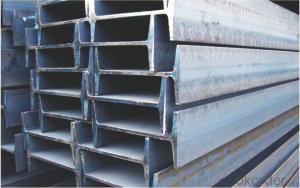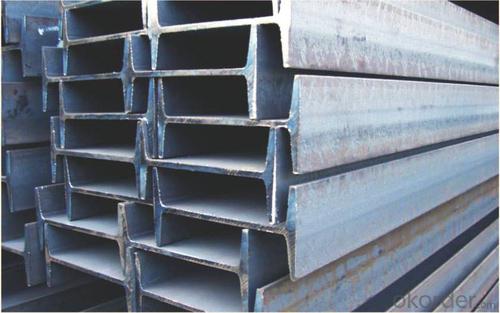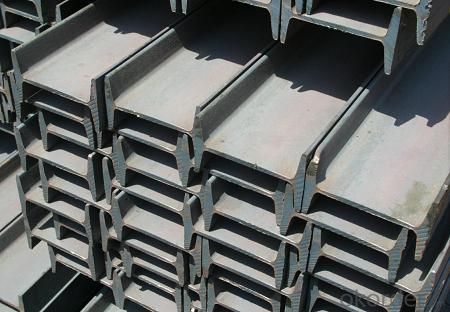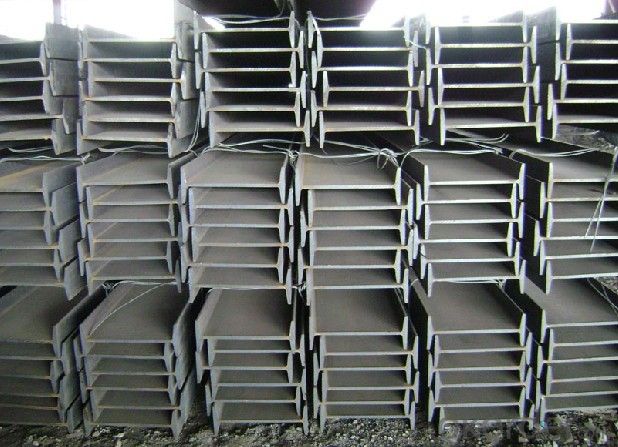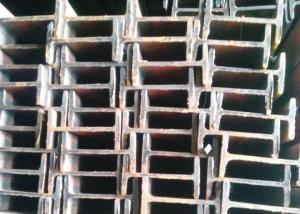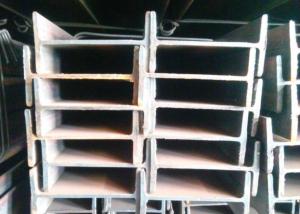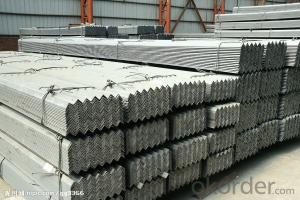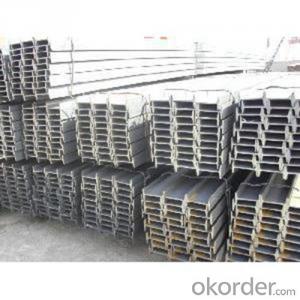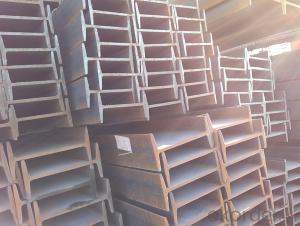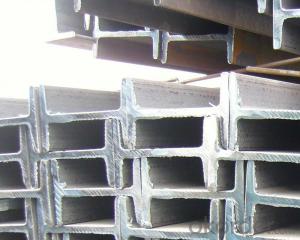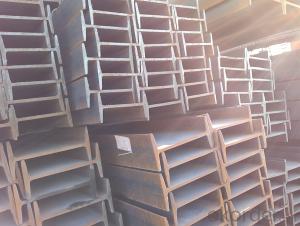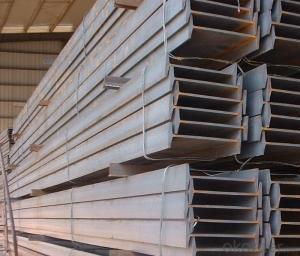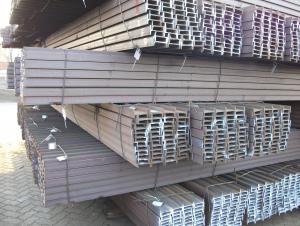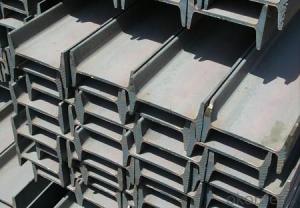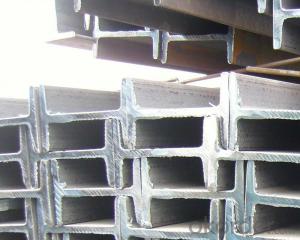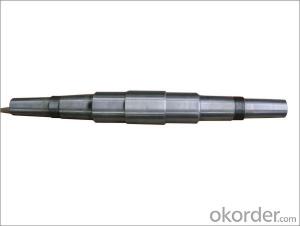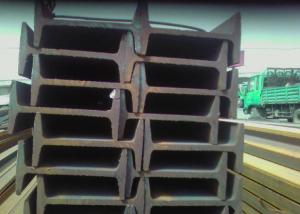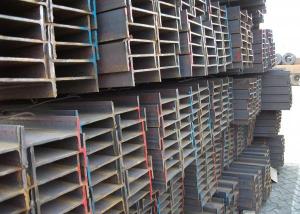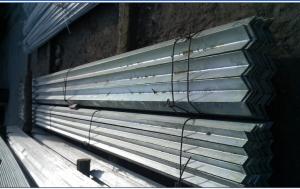high quality IPE IPEAA hot rolled 80-200
- Loading Port:
- Qingdao
- Payment Terms:
- TT OR LC
- Min Order Qty:
- 25 m.t.
- Supply Capability:
- 100000 m.t./month
OKorder Service Pledge
OKorder Financial Service
You Might Also Like
IPE Details:
| Minimum Order Quantity: | Unit: | m.t. | Loading Port: | ||
| Supply Ability: | Payment Terms: | Package: | wire rod bundle |
Product Description:
Product Description:
Specifications of IPE Beam
1. Invoicing on theoretical weight or actual weight as customer request
2. Standard: EN10025, GB Standard, ASTM
3. Grade: Q235B, Q345B, SS400, ASTM A36, S235JR, S275JR
4. Length: 5.8M, 6M, 9M, 12M as following table
5. Sizes: 80mm-270mm
Dimensions(mm) | |||||
h | b | s | t | Mass Kg/m | |
IPE80 | 80 | 46 | 3.80 | 5.20 | 6.00 |
IPE100 | 100 | 55 | 4.10 | 5.70 | 8.10 |
IPE120 | 120 | 64 | 4.80 | 6.30 | 10.40 |
IPE140 | 140 | 73 | 4.70 | 6.90 | 12.90 |
IPE160 | 160 | 82 | 5.00 | 7.40 | 15.80 |
IPE180 | 180 | 91 | 5.30 | 8.00 | 18.80 |
IPE200 | 200 | 100 | 5.60 | 8.50 | 22.40 |
IPE220 | 220 | 110 | 5.90 | 9.20 | 26.20 |
IPE240 | 240 | 120 | 6.20 | 9.80 | 30.70 |
IPE270 | 270 | 135 | 6.60 | 10.20 | 36.10 |
Appications of IPE Beam
1. Supporting members, most commonly in the house raising industry to strengthen timber bears under houses. Transmission line towers, etc
2. Prefabricated structure
3. Medium scale bridges
4. It is widely used in various building structures and engineering structures such as roof beams, bridges, transmission towers, hoisting machinery and transport machinery, ships, industrial furnaces, reaction tower, container frame and warehouse etc.
Package & Delivery of IPE Beam
1. Packing: it is nude packed in bundles by steel wire rod
2. Bundle weight: not more than 3.5MT for bulk vessel; less than 3 MT for container load
3. Marks: Color marking: There will be color marking on both end of the bundle for the cargo delivered by bulk vessel. That makes it easily to distinguish at the destination port.
4. Tag mark: there will be tag mark tied up on the bundles. The information usually including supplier logo and name, product name, made in China, shipping marks and other information request by the customer.
If loading by container the marking is not needed, but we will prepare it as customer request.
5. Transportation: the goods are delivered by truck from mill to loading port, the maximum quantity can be loaded is around 40MTs by each truck. If the order quantity cannot reach the full truck loaded, the transportation cost per ton will be little higher than full load.
6. Delivery of IPE Beam: 30 days after getting L/C Original at sight or T/T in advance
Production flow of IPE Beam
Material prepare (billet) —heat up—rough rolling—precision rolling—cooling—packing—storage and transportation
- Q: How do steel I-beams perform in terms of acoustic insulation?
- Steel I-beams have poor acoustic insulation properties. This is due to their dense and rigid nature, which allows sound waves to easily travel through the material. As a result, steel I-beams do not effectively block or absorb sound, making them less suitable for applications requiring acoustic insulation.
- Q: How do steel I-beams perform in areas with high levels of seismic activity?
- Steel I-beams are renowned for their outstanding performance in areas with high levels of seismic activity. Their inherent strength and versatility make them an ideal structural element for seismic-resistant buildings. During an earthquake, the ground undergoes intense shaking, causing lateral forces and ground movements that can severely compromise the integrity of a structure. Steel I-beams, due to their superior strength and ductility, are able to withstand these forces better than other structural materials. The I-beam's unique shape, with its flanges and web, provides excellent resistance against bending and twisting forces. This enables the beam to distribute the seismic energy throughout its length, preventing concentrated stress points that could lead to structural failure. Additionally, the open web design allows for better flexibility and reduces the risk of brittle fractures during seismic events. Moreover, steel I-beams can be designed and engineered to meet specific seismic requirements, considering factors such as building height, soil conditions, and local seismic intensity. By utilizing advanced design techniques, such as moment-resisting frames, steel I-beams can dissipate seismic energy through controlled yielding and ductile behavior, effectively protecting the building and its occupants. Another advantage of steel I-beams in seismic areas is their ability to be easily repaired or retrofitted. In the unfortunate event of an earthquake-induced damage, damaged sections can be replaced or repaired, ensuring the structure remains safe and functional. In summary, steel I-beams are an excellent choice for areas with high levels of seismic activity. Their superior strength, ductility, and ability to dissipate seismic energy make them an essential component in earthquake-resistant construction.
- Q: What are steel I-beams?
- Steel I-beams, also known as H-beams or universal beams, are structural steel members with an "I" or "H" shape. They are widely used in construction and engineering projects due to their high strength and load-bearing capabilities. The cross-section of an I-beam consists of two horizontal flanges connected by a vertical web. The flanges are wider than the web, providing increased resistance against bending and shearing forces. This design allows I-beams to efficiently distribute weight and withstand heavy loads, making them ideal for supporting structures such as buildings, bridges, and skyscrapers. Moreover, steel I-beams are versatile as they can be easily modified or cut to fit specific project requirements. Overall, steel I-beams are crucial components in the construction industry, providing stability, strength, and durability to various structures.
- Q: Can steel I-beams be used for cold storage facilities?
- Yes, steel I-beams can be used for cold storage facilities. Steel I-beams are commonly used in construction for their strength, durability, and ability to withstand heavy loads. In cold storage facilities, where low temperatures and heavy loads are present, the use of steel I-beams is especially beneficial. The structural integrity of the I-beams ensures that the building can support the weight of the stored goods and the refrigeration equipment. Additionally, steel is a good conductor of cold, which helps to maintain the desired low temperatures inside the facility. Overall, steel I-beams are a reliable and suitable choice for cold storage facilities.
- Q: What are the typical deflection limits for steel I-beams?
- The typical deflection limits for steel I-beams vary depending on the specific application and design requirements. However, there are some general guidelines and standards that are commonly followed in structural engineering. In most cases, the deflection limits for steel I-beams are based on the span length of the beam and the type of load it is expected to carry. The deflection limit is often expressed as a ratio of the beam's deflection to its span length. For beams supporting live loads, such as floor beams or roof beams, the deflection limit typically ranges from L/360 to L/240, where L represents the span length of the beam. This means that the maximum deflection of the beam should not exceed 1/360th to 1/240th of its span length. For beams supporting dead loads, such as beams in a building's structure, the deflection limit is often more stringent. In these cases, the deflection limit can be as low as L/480, ensuring minimal sagging or bending of the beam under the weight of the structure. It is important to note that these deflection limits are general guidelines and can vary depending on the specific design requirements, load conditions, and building codes in different regions. Structural engineers and designers are responsible for determining the appropriate deflection limits based on the specific project and its unique requirements. Overall, the deflection limits for steel I-beams are established to ensure the structural integrity and functionality of the beams while maintaining a safe and stable design.
- Q: Can steel I-beams be used for column-free spaces?
- No, steel I-beams cannot be used for column-free spaces. The primary purpose of steel I-beams is to provide structural support and load-bearing capacity. They are typically used as horizontal beams to support the weight of the structure above and transfer it to the vertical columns or walls. In column-free spaces, where there are no vertical supports, steel I-beams alone cannot provide the necessary structural integrity. Additional structural elements such as trusses, arches, or other specialized systems are required to create column-free spaces. These systems distribute the load and provide the necessary support to maintain the structural stability of the space.
- Q: How do steel I-beams perform in terms of fire protection?
- Steel I-beams generally have poor performance in terms of fire protection. While steel is a strong and durable material, it quickly loses its structural integrity when exposed to high temperatures. In a fire, steel I-beams can warp, buckle, and eventually collapse, posing a significant safety risk. To enhance fire protection, steel I-beams are often coated with fire-resistant materials or encased in fire-resistant barriers to delay heat transfer and maintain their load-bearing capacity for a longer duration.
- Q: Can steel I-beams be used for temporary structures?
- Yes, steel I-beams can be used for temporary structures. They are commonly used in construction for temporary supports, such as scaffolding and shoring, due to their strength and durability.
- Q: What are the different types of steel coatings for I-beams?
- I-beams can be coated with various types of steel coatings that serve different purposes. These coatings aim to enhance the durability and longevity of the steel, improve its resistance to corrosion, enhance its aesthetic appearance, and provide additional protection against fire. One commonly used coating is hot-dip galvanizing, which involves immersing the steel beam in molten zinc. This coating offers robust and long-lasting protection against corrosion, making it suitable for outdoor or high-moisture environments. It acts as a barrier, preventing moisture from reaching the steel surface and reducing the risk of rust formation. Another option is epoxy-based paint, which can be applied as a powder or liquid and cured through a chemical reaction. Epoxy coatings provide excellent protection against corrosion, chemicals, and abrasion. They are often used in industrial settings or environments with harsh conditions. Thermal spray coatings, such as zinc or aluminum coatings, are also available. These coatings are created by melting the coating material and spraying it onto the steel beam. They provide a thick layer of protection against corrosion, wear, and heat. They are commonly used in applications where high temperatures or extreme conditions are expected. For fire-resistant applications, specialized coatings are available. These coatings are designed to delay or prevent the spread of fire by creating a barrier between the steel and flames. They can be intumescent coatings, which expand when exposed to heat, or cementitious coatings, which form a protective layer of cement-like material. Ultimately, the choice of steel coating for I-beams depends on specific requirements such as environmental conditions, expected lifespan, and desired level of protection. Seeking professional advice or consulting with a steel supplier can help determine the most suitable coating for a particular project.
- Q: Help: how can I sample steel beams?
- Cold is generally two times the thickness, tensile tensile and bending no specific requirements, the size of 450mm and 350mm, the sampling method can be used to blow out the slightly larger cutting requirements size, and then use the milling machine, cutting will affect regional removal.
Send your message to us
high quality IPE IPEAA hot rolled 80-200
- Loading Port:
- Qingdao
- Payment Terms:
- TT OR LC
- Min Order Qty:
- 25 m.t.
- Supply Capability:
- 100000 m.t./month
OKorder Service Pledge
OKorder Financial Service
Similar products
Hot products
Hot Searches
Related keywords
